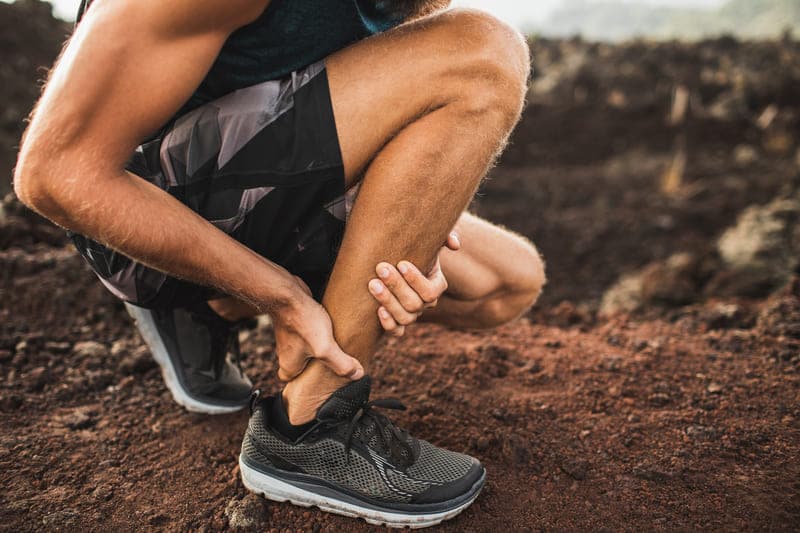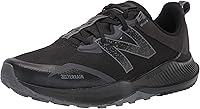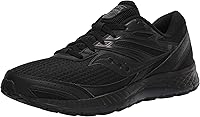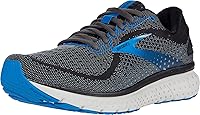The 8 Best Running Shoes for Peroneal Tendonitis for 2022

Peroneal tendonitis can cause a lot of pain in your ankle and foot. You may then feel uncomfortable running or exercising. But with shoes for peroneal, you stand a chance to exercise with comfort. As such, you should invest in the best running shoes for peroneal tendonitis.
But with plenty of shoes on the market, finding the best running shoes for your foot condition might prove to be quite a challenge. This article presents a few incredible running shoes that might help alleviate your condition.
The article also has a buyer’s guide section that suggests factors to keep a close eye on when shopping for shoes. Be sure to read on for more information on the best running shoes for peroneal tendonitis.
Best Running Shoes for Peroneal Tendonitis Chart
| RANK | PICTURE | PRODUCT | RATING | SHOPS |
|---|---|---|---|---|
| 1. |  |
ASICS Gel-Nimbus 22 Platinum
|
For Men | |
| 2. |  |
New Balance Nitrel V4
|
For Men | |
| 3. |  |
Saucony Cohesion 13
|
For Men | |
| 4. |  |
Brooks Glycerin 18
|
For Men | |
| 5. | Saucony Triumph 17
|
For Men | ||
| 6. | Salomon XA Pro 3D V8
|
For Men | ||
| 7. | Mizuno Wave Rider 24
|
For Men | ||
| 8. | Adidas Ultraboost 20
|
For Men |
@media only screen and (max-width: 768px){ #nichetablewpwp5ac60deb-aaae-4317-a7c4-f8461e8692f6 td:nth-of-type(1):before{ content: 'RANK'; } #nichetablewpwp5ac60deb-aaae-4317-a7c4-f8461e8692f6 td:nth-of-type(2):before{ content: 'PICTURE'; } #nichetablewpwp5ac60deb-aaae-4317-a7c4-f8461e8692f6 td:nth-of-type(3):before{ content: 'PRODUCT'; } #nichetablewpwp5ac60deb-aaae-4317-a7c4-f8461e8692f6 td:nth-of-type(4):before{ content: 'RATING'; } #nichetablewpwp5ac60deb-aaae-4317-a7c4-f8461e8692f6 td:nth-of-type(5):before{ content: 'SHOPS'; } #nichetablewpwp5ac60deb-aaae-4317-a7c4-f8461e8692f6 td:nth-of-type(6):before{ content: ''; } #nichetablewpwp5ac60deb-aaae-4317-a7c4-f8461e8692f6 td:nth-of-type(7):before{ content: ''; } #nichetablewpwp5ac60deb-aaae-4317-a7c4-f8461e8692f6 td:nth-of-type(8):before{ content: ''; } #nichetablewpwp5ac60deb-aaae-4317-a7c4-f8461e8692f6 td:nth-of-type(9):before{ content: ''; } #nichetablewpwp5ac60deb-aaae-4317-a7c4-f8461e8692f6 td:nth-of-type(9):before{ content: ''; } #nichetablewpwp5ac60deb-aaae-4317-a7c4-f8461e8692f6 td:nth-of-type(9):before{ content: ''; } #nichetablewpwp5ac60deb-aaae-4317-a7c4-f8461e8692f6 td:nth-of-type(9):before{ content: ''; } } @media only screen and (min-width: 768px){ .niche_table, .niche_table th, .niche_table td, .niche_table tr{ border-color: #f1f1f1 !important; } .niche_table tr:nth-child(odd){background-color:undefined !important;} }
Running Shoes for Peroneal Reviews
Our Top Pick
1. ASICS Gel-Nimbus 22 Platinum
Best Comfort
309 grams
Drop:10 mm BUY Men’s BUY Women’s
Things we liked Breathable engineered mesh uppers. Flytefoam® Propel technology for a responsive ride Rearfoot Gel cushioning technology EVA midsole sock liners for underfoot comfort AHAR outsole is durable
Things we didn’t like The toe box is extra wide The shoes are a bit pricey
As a runner with peroneal tendonitis, you require some cushioning and comfort. Breathability enhances comfort since fresh air will cool your feet inside your running shoe. Fortunately, Asics gel nimbus 22 platinum has breathable upper mesh.
The engineered mesh embraces your foot’s shape as it is stretchable and provides a soft cushioning. What’s more, the upper unit is lightweight to improve your performance. The Asics gel venture nimbus 22 shoe also boasts a brighter look, thanks to the shiny platinum-colored overlays.
The overlays also bolster the upper mesh for arch support and stability, besides offering protection and durability to the upper mesh. The traditional lacing systems provide a means of locking down your foot for better running performance.
Runners with peroneal tendonitis could appreciate the impressive soft cushioning of this running shoe. The Flytefoam® Propel technology make sure you get a bouncy ride to increase your mile coverage. The technology generates energy for a responsive ride.
The midsole of this Gel-Venture Nimbus shoe also has the brand’s Gel technology for absorbing all the shocks at impact. As a result, you will have a pain-free running experience. The midsole’s Trusstic™ technology stabilizes the high arches and reduces the overall weight of the shoe.
This Gel Venture Nimbus shoe also help runners have an efficient gait cycle since it has the Guidance Line® midsole technology. These shoe also has pre-shaped EVA midsole sock liners to comfort your foot further and prevent tendonitis peroneal. Asics Men s Gel and Asics Women s Gel-Nimbus 22 have impressive traction on wet and dry surfaces. However, Asics Men s Gel are heavier than Asics Women s Gel. But the rest of the features remain the same in quality. The AHARTM outsole material is very durable since it is abrasion-resistant. Therefore, these best shoes for peroneal tendonitis comforts the foot, and will probably do so for a long time!
2. New Balance Nitrel V4
Best Traction
292 grams
Drop:8 mm BUY Men’s BUY Women’s
Things we liked Engineered upper mesh No-sew overlays for support Dynasoft cushioning EVA foam inserts for foot comfort AT TREAD outsoles
Things we didn’t like The shoes don’t run true to size Inserts are not very durable
One remarkable feature of the New Balance Nitrel V4 running shoe are the AT TREAD outsoles. As a result, runners get impressive traction on various running surfaces such as roads, trails, pavements, and tracks.
Comfort is another benefit of the New Balance running shoe. The shoe model features an engineered upper mesh for breathability and lightweight design. The optimal ventilation ensures plenty of fresh air circulates within your shoes.
For both men and women shoe, the upper mesh of the New Balance features no-sew overlays for structural support. The overlays also protect the upper mesh against abrasion, thus ensuring its durability.
Impressive soft cushioning is yet another essential characteristic of this running shoe by New Balance, specially in the New Balance women shoes.
The New Balance Dynasoft midsole works with the EVA inserts to comfort the foot. As such, this is an excellent running shoe for tendons condition.
The overall design of both the men and women shoe is impressive, and runners commend the shoes for their wide toe box. but the New Balance Women has a smaller toe box.
You could use a bit of toe splay when running. The materials of these shoes are premium-quality and lightweight. If you’re looking to exercise daily, these shoes could be your best running shoes for peroneal tendonitis.
3. Saucony Cohesion 13
Best Design
283 grams
Drop:10 mm BUY Men’s BUY Women’s
Things we liked Durable rubber outsole Sufficient traction Breathable mesh upper Zigzagging flex grooves Versarun technology for shock absorption
Things we didn’t like The toe box is too wide The outsole is not very flexible
The upper unit of these best shoes for peroneal tendonitis comprises two materials: synthetic overlays and mesh fabric. The overlays bolster the mesh fabric for structural support. The mesh fabric keeps the shoe breathable for a comfortable in-shoe environment.
Moreover, the mesh fabric is soft and has an irritation-free sensation on the foot. Therefore, it improves the comfort of both the men and women’s shoe.
Ample cushioning enhances the comfort level in this running shoe. The padded tongue comforts the foot even if you tighten the fit using the traditional lacing system on the shoes.
Excellent shock absorption comes from the Versarun technology in the midsoles. The shoe comes in handy to alleviate your peroneal tendonitis in both men and women.
The footbed also has ample cushioning for a softer feel. Therefore, it offers underfoot protection.
The outsole unit of this shoe has segmented rubber materials for traction and flexibility. Rubber has sufficient traction on roads, making these running shoe best for road running. The high abrasion rubber outsole adds durability to the shoes.
The flex grooves with a zigzag pattern on the outsole also make this running shoe for best for tendons and performance when road running in these shoes.
4. Brooks Glycerin 18
Best Cushioning
289 grams
Drop:10 mm BUY Men’s BUY Women’s
Things we liked Stretchable upper unit Sufficient ankle support Traditional lacing system for foot lockdown DNA loft cushioning is excellent OrtholiteTM sock liner for underfoot comfort Robust outsole design for traction Good heel support
Things we didn’t like They lack a bouncy ride Breathability isn’t the best
Brooks Glycerin 18 are one of the best running shoes for peroneal tendonitis since their upper mesh is breathable. As such, they allow fresh air to circulate within the shoes for comfort.
What’s more, the upper mesh is stretchable to accommodate your foot’s shape with comfort.
The seamless and secure fit for both men and women is made possible by the 3D Fit Print overlays on the upper unit. The overlays give stability to the shoe and come in handy when customizing the fit using the traditional lacing system.
Plenty of padding on the heel collar ensures your running shoe provides ankle support for enhanced stability and runs. The tongue also has sufficient padding to reduce the pressure that the shoelaces exert when customizing the fit.
Shoes for peroneal tendonitis should have plenty of comforts. It is incredible how the DNA loft foam in the midsoles attenuates shocks at impacts for a pain-free running experience. The DNA loft foam also provides a responsive ride.
If you’re looking to cover more miles, this shoe is one of the best options for both men and women. The heel to toe transition is soft, thanks to the DNA loft foam material in the midsole. A premium in-shoe comfort comes from the shoes’ OrthoLite™ sock liner.
Since peroneal tendonitis condition is painful, you should avoid slips that might increase the chances of hurting you. The non-slip green rubber outsole provides sufficient traction on wet and dry surfaces.
The heel section of this shoe has a high abrasion-resistant rubber for durability and excellent underfoot protection. The blown rubber on the forefoot section is also durable and provides additional responsiveness.
5. Saucony Triumph 17
Best Foot Lockdown
312 grams
Drop:8 mm BUY Men’s BUY Women’s
Things we liked True to size No break-in period Excellent traction Breathable upper mesh TRIFLEX design PWRRUN+ midsole cushioning
Things we didn’t like A bit expensive The shoes are a bit heavy
Saucony triumph 17 is a running shoe that is all about comfort. It is an ideal choice for neutral runners, both men and women, looking to run daily on their favorite roads.
The engineered mesh upper is breathable since it allows fresh air to flow into this running shoe.
It is incredible how the 3D Print overlays stabilize the shoe uppers for the shoes’ general stability. The overlays also protect the upper mesh from abrasive elements. As such, the uppers are stable and durable.
As one of the best running shoes for peroneal tendonitis, Saucony Triumph 17 cushions the foot against shocks at impact. The PWRRUN+ midsole material absorbs all shocks at impact. As a result, your feet will experience no pain during intensive runs.
This makes Saucony Triumph 17 shoe one of the best shoes best running shoes for peroneal tendonitis.
This shoe also offers you an excellent bounce back springy ride, thanks to the PWRRUN+ midsole material. You will also like the smooth heel to toe transitions of this shoe.
The TRIFLEX design guarantees flexibility so that you can move your foot as naturally as possible during the gait cycle.
The traction is also impressive since the blown rubber outsole grips wet and dry surfaces with ease.
The impressive cushioning from the midsole makes this shoe model ideal for runners with peroneal tendonitis.
6. Salomon XA Pro 3D V8
Best Durability
317 grams
Drop:x mm BUY Men’s BUY Women’s
Things we liked Glove-like sensation Sufficient arch support 3D open mesh upper SensiFit™ technology for support OrthoLite® insole Contagrip® MA outsole for traction 3D chassis technology for a responsive ride
Things we didn’t like The shoes might be a bit bulky The shoes are not very flexible
These are some of the best running shoes for peroneal tendonitis since their uppers have a glove-like sensation on the skin.
The shoes owe this soft and pleasant feel to their stitch-free upper mesh construction. The 3D open mesh allows airflow into the shoes, and your feet will say fresh and dry throughout the running activity.
The SensiFit technology that covers the shoes from the midsole to the lacing system guarantees sufficient support. As such, these shoes offer impressive arch support.
The QuickLace system comes in handy when you’re looking to customize the shoes’ fitness without any hassles.
The EnergyCell midsole material excellently attenuates shocks, making Salomon XA Pro 3D V8 shoes for peroneal tendonitis. The same midsole material gives a runner sufficient energy return for an enhanced mile coverage.
Underfoot comfort is a necessity in shoes for peroneal tendonitis. Fortunately, these shoes also have OrthoLite® insole for underfoot protection. Traction on multiple surfaces is impressive, especially on trails where the shoes are destined to handle.
The Contagrip® MA outsole grips even wet surfaces to keep you safe from slipping. This is a durable rubber-made outsole that improves underfoot protection.
The 3D chassis that’s between the midsole and outsole provides a responsive ride. Therefore, this shock-absorbing shoe is ideal for runners with peroneal tendonitis.
These are one of the best running shoes to seek if you have paroneal tendonitis.
7. Mizuno Wave Rider 24
Best Responsive Ride
281 grams
Drop:5 mm BUY Men’s BUY Women’s
Things we liked A bouncy ride Dual-layer engineered mesh upper U4ice cushioning Heel counter support Mizuno Energy Foam for additional cushioning Impressive flexibility High-abrasion rubber-made outsole
Things we didn’t like Heel to toe drop is a bit high Traction isn’t the best
Mizuno is also some of the best running shoes for peroneal tendonitis since they are comfortable. Comfort comes from the impressive breathability feature of the shoes. The dual-layer engineered mesh has horizontal lacer perforation that allows air to flow into your shoes.
Below the outer upper mesh is the brand’s WAVEKNIT construction. It makes the shoes have a sock-like sensation on the skin for comfort. The crash pad ankle collar ensures you have plenty of ankle support for stability when handling challenging terrains.
The U4ice midsole material has undergone significant improvement to attenuate shocks excellently at impact. The well-cushioned midsole makes these running shoes for peroneal have a smoother ride.
The U4ice material is lightweight and reduces the overall weight of the running shoes.
The Mizuno Energy Foam is another midsole material that cushions the foot against shock during impacts. Every shock-absorbing material is durable, especially with the durable carbon rubber-made outsole underneath it. They are one of the best shoes for peroneal. These best shoes for peroneal also have blow rubber in some sections of the outsole unit for softer landings. Flexibility is yet another advantage of the shoes. The anatomical flex grooves ensure you can flex your foot muscles as naturally as possible.
8. Adidas Ultraboost 20
Best Stability
310 grams
Drop:10 mm BUY Men’s BUY Women’s
Things we liked PrimeKnit upper mesh construction Tailored Fibre Placement stitching design Boost technology for a responsive ride Well-cushioned midsole for sock attenuation Heel counter support for stability Maximum traction
Things we didn’t like The shoes are a bit heavy Not ideal for fast-paced runners
Adidas Ultraboost 20 running shoe has one of the most comfortable upper mesh construction. The PrimeKnit upper construction has a sock-like sensation on the skin. It also makes the shoes breathable. Your feet will stay fresh and dry throughout your running experience!
The Tailored Fibre Placement is a stitching technology on the shoes’ upper. This stitching design provides targeted support around the midfoot without sacrificing breathability. The 3D heel frame provides ankle support for more stability when you’re running.
Adidas Ultraboost 20 running shoe gets its name from the Boost technology in the midsole. The technology makes the shoes well-cushioned and springy, thanks to the sufficient energy return. As such, these are some of the best running shoes for peroneal tendonitis.
You will probably have a smooth heel to toe transition since the shoes also have the Torsion® system in the midsole unit. If you have peroneal tendonitis, slipping is one of your worst fears. Thankfully, these shoes feature a highly durable rubber outsole with the Continental Stretchweb technology.
The technology maximizes the contact between the outsole and the ground for improved traction. Since the rubber outsole is abrasion-resistant, these shoes for peroneal tendonitis offer an extended service. The impressive cushioning by their midsole makes them best running shoes for peroneal tendonitis.
Buying Guide
There are a few factors to consider if you’re looking to buy the best running shoes for peroneal tendonitis. They include the following:
Shock Absorption
An excellent cushioning system is essential when it comes to shock absorption at impact. Peroneal tendonitis can cause pain on the outside of your foot. Since you don’t need shocks to inflict pain on your foot, be sure to look for shoes with an excellent cushioning system.
The midsole unit of best shoes for peroneal is the section that absorbs shocks. The materials of the midsole determine its shock-absorption function. Rearfoot Gel cushioning is an excellent midsole material since it attenuates all shocks during impact. As such, you could buy running shoes with this midsole material. You can also look for BioMoGo DNA loft material since it also works great.
Comfort and Fit
Your foot needs to have sufficient cushioning to reduce the pain from the Peroneal tendonitis condition. The shoe for tendons should have an upper unit that gives a glove-like sensation on the skin. This will enhance foot comfort.
Your running shoe should also fit you perfectly without squeezing any section of your feet for it to qualify to be the best shoe for peroneal tendons. Be sure to buy right-sized shoe for a perfect fit, for both men and women.
Also, check to ensure the shoe has a design that guarantees comfort. A good example is SensiFit technology. You can also look for an alternative design to ensure you stay comfortable in your shoe for peroneal tendonitis.
Support and Stability
When you’re getting plenty of support from your best running shoes for peroneal tendonitis, you will be stable. Stability is essential to improve your running performance and alleviate the pain from your peroneal tendonitis condition.
Arch and heel support is essential in all best shoes for peroneal. A supported arch will help your feet to distribute the shock from impact uniformly.
As a result, no single section of your feet will take a maximum hit. Ankle support will also be essential, especially when you’re experiencing pain in the ankle. Be sure to look for running shoes with a padded ankle collar.
Breathability
Airflow into your best shoes for peroneal tendons is critical for a fresh and dry feet. This will eliminate internal slips, and prevent any cause of peroneal tendons.
It will also keep you safe when running out on the road. The best running shoes for peroneal tendonitis should have an engineered upper mesh for breathability.
Besides making the shoes breathable, an engineered mesh is stretchable and adapts to your foot’s shape. Therefore, you have plenty of reasons for choosing running shoes for peroneal tendons with an engineered upper mesh.
Flexibility
A smooth heel to toe transition is helpful if you want to run for an extended period. But the flexibility of your best shoes for peroneal will allow you to have a smooth heel to toe transition. Your shoes will be flexible if they have flex grooves on the outsoles.
As such, be sure to look for running shoes with a segmented rubber material on the outsole for flexibility. You can also buy shoes with flex grooves on the outsole.
Frequently Asked Questions
Can I run with Peroneal Tendonitis?
There are plenty of shoes for peroneal tendonitis on the market. With shoes for Peroneal Tendonitis, your feet will be well-cushioned against shocks. As a result, you will run smoothly, especially if the shoes have flex grooves on the outsole.
Can shoes cause Peroneal Tendonitis?
Poorly designed shoes could cause peroneal tendonitis, especially if you run repetitively in them. Running repetitively on sloped surfaces with poorly designed footwear increase your chances of developing this condition. Therefore, always be sure to have proper footwear for your daily training.
How do running shoes for peroneal tendonitis work?
Shoes for peroneal tendonitis have a cushioning system that absorbs shocks during foot strikes. They use different materials in the midsole section. BioMoGo DNA foam and gel cushioning are some of the materials they use to attenuate shocks.
Should my shoes for peroneal tendonitis be breathable?
Your best shoes for peroneal should also be breathable besides attenuating shocks during foot strike. Fresh air inflow into the shoes ensures your foot is fresh and dry to alleviate pain from peroneal tendonitis.
Conclusion
Having peroneal tendonitis is not the end of your training. You can still invest in a running shoe that will keep your peroneal tendonitis condition at bay. Such shoes have plenty of shock-absorbing materials in their midsoles for shock attenuation.
Also, the best shoes for peroneal have a breathable mesh upper to comfort your foot and allow the inflow of fresh air. Besides, they have impressive traction to keep you on your feet through your run. As such, they are ideal for any runner with peroneal tendonitis.
This article has looked at a few incredible shoes that might alleviate your foot condition. You could find the model that works best for you. Your hunt for the best shoes for peroneal tendonitis might be simple with the buyer’s guide section on this article. Be sure to check and see if you can find your preferred shoes.
The Best Running Shoes for Peroneal Tendonitis are the ASICS Gel-Nimbus 22 Platinum
